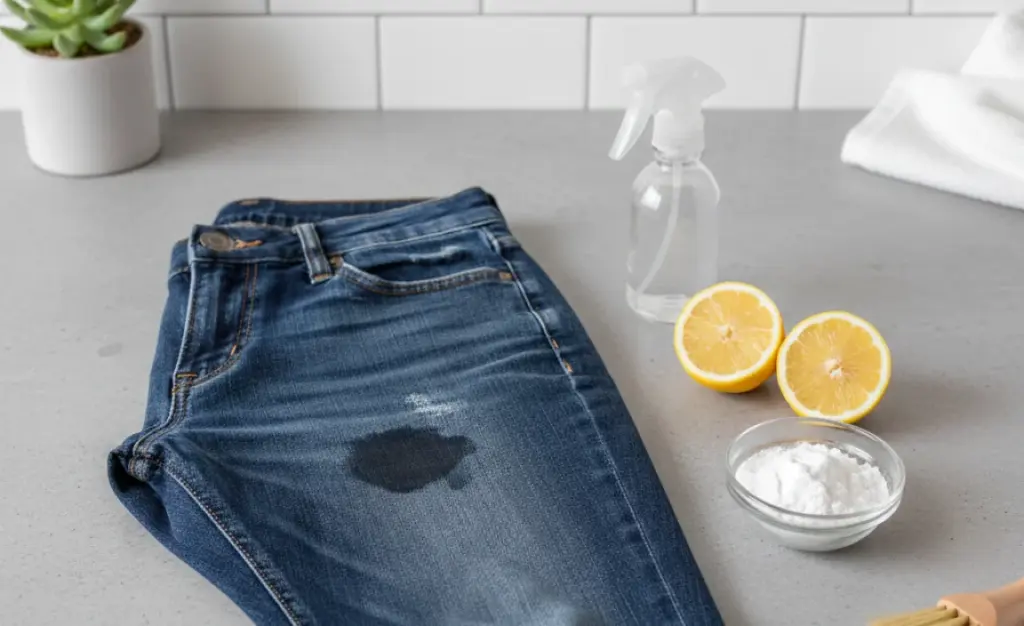Grease stains on jeans can be removed effectively with simple household items and a few easy steps, restoring your favorite denim without harsh chemicals.
Jeans are a wardrobe staple, but grease stains can happen to anyone, whether from kitchen mishaps, workshop projects, or everyday wear. Seeing a stubborn grease spot on your favorite pair can be frustrating, but don’t panic! Many effective methods exist that don’t require expensive or complicated treatments. This guide will walk you through proven techniques to lift grease and get your denim looking like new again. We’ll cover everything from common household remedies to specialized treatments, ensuring you have the right approach for any grease emergency.
Understanding Grease Stains on Denim
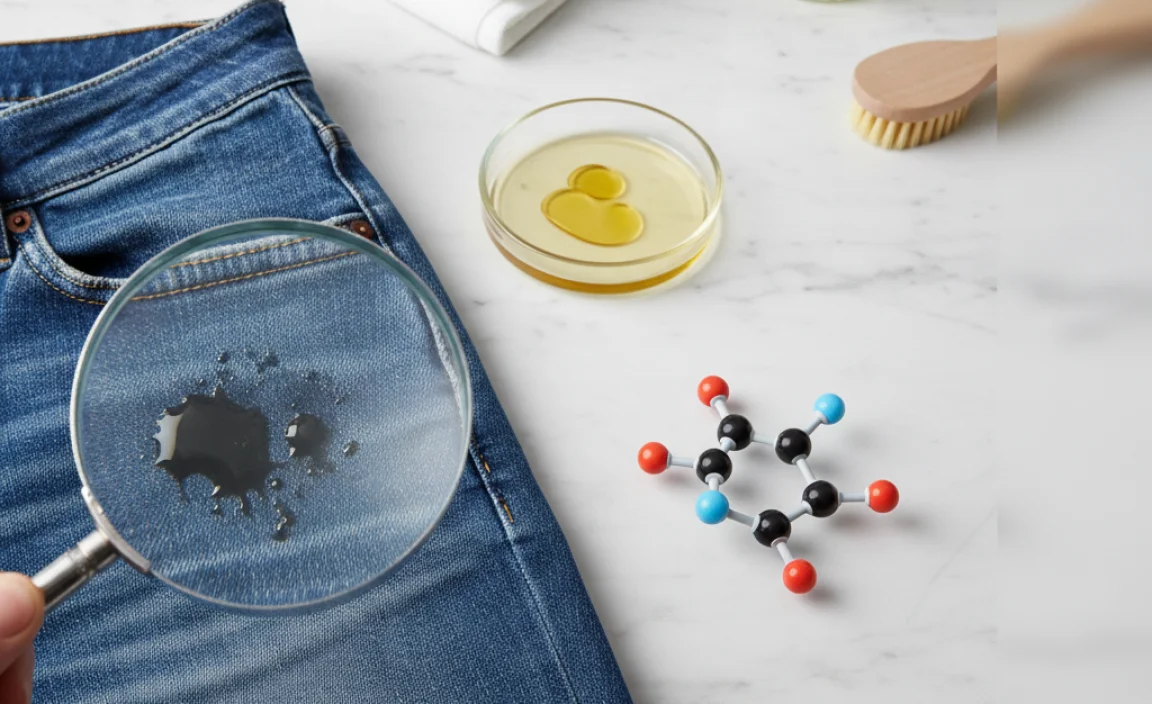
Grease and oil stains are notoriously tricky because they don’t mix well with water, which is the primary component of most washing cycles. Instead of dissolving, grease tends to spread and embed itself into fabric fibers. This is why simply tossing stained jeans into the washing machine might not be enough, and can sometimes even set the stain further. The key to tackling grease is to use a substance that can absorb or break down the oil before washing.
The Essential Hack: Dish Soap to the Rescue
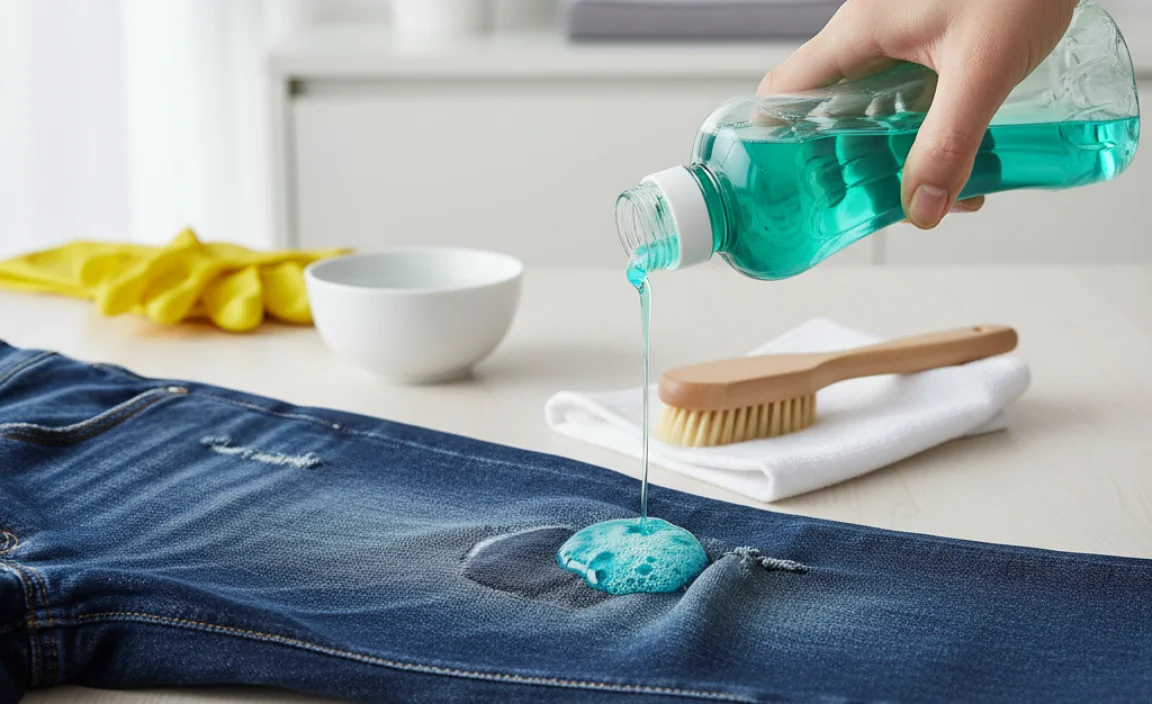
For most common grease stains on jeans, your trusty dish soap is the most effective and readily available tool. The surfactants in dish soap are designed to cut through grease on dishes, and they work just as well on fabric.
What You’ll Need:
Liquid Dish Soap: Choose a grease-cutting variety (like Dawn, Palmolive, or similar).
Soft Brush: An old toothbrush or a soft-bristled laundry brush works perfectly.
Paper Towels or Clean Cloths: For blotting.
Cold Water: Essential for initial treatment.
Optional: Baking Soda or Cornstarch: For extra absorption power on tougher stains.
Step-by-Step Grease Removal:
1. Act Fast: The sooner you treat a grease stain, the easier it will be to remove. If the stain is fresh, gently blot up any excess grease with a paper towel. Avoid rubbing, as this can spread the stain.
2. Apply Dish Soap: Apply a generous amount of liquid dish soap directly onto the grease stain. Gently work it into the fabric with your fingers or a soft brush. Ensure the entire stained area is covered.
3. Let It Sit: Allow the dish soap to sit on the stain for at least 10-15 minutes. For older or tougher stains, you can let it sit for up to an hour. This gives the soap time to break down and lift the grease.
4. Rinse with Cold Water: Rinse the treated area thoroughly with cold water. You should see some of the grease visibly lifting.
5. Wash as Usual: Launder your jeans in cold water with your regular detergent. It’s best to wash jeans with similar colors to avoid any bleeding.
6. Air Dry: Crucially, do not put your jeans in the dryer until you are absolutely certain the stain is gone. The heat from the dryer can permanently set any remaining grease. Air dry them instead. If the stain persists, repeat the treatment process.
Why This Works:
Dish soap contains powerful surfactants that emulsify grease, meaning they break down oil into smaller particles that can then be washed away with water. Cold water is preferred for the initial treatment because hot water can sometimes cook grease into the fabric fibers, making it harder to remove.
Tackling Stubborn or Set-In Grease Stains
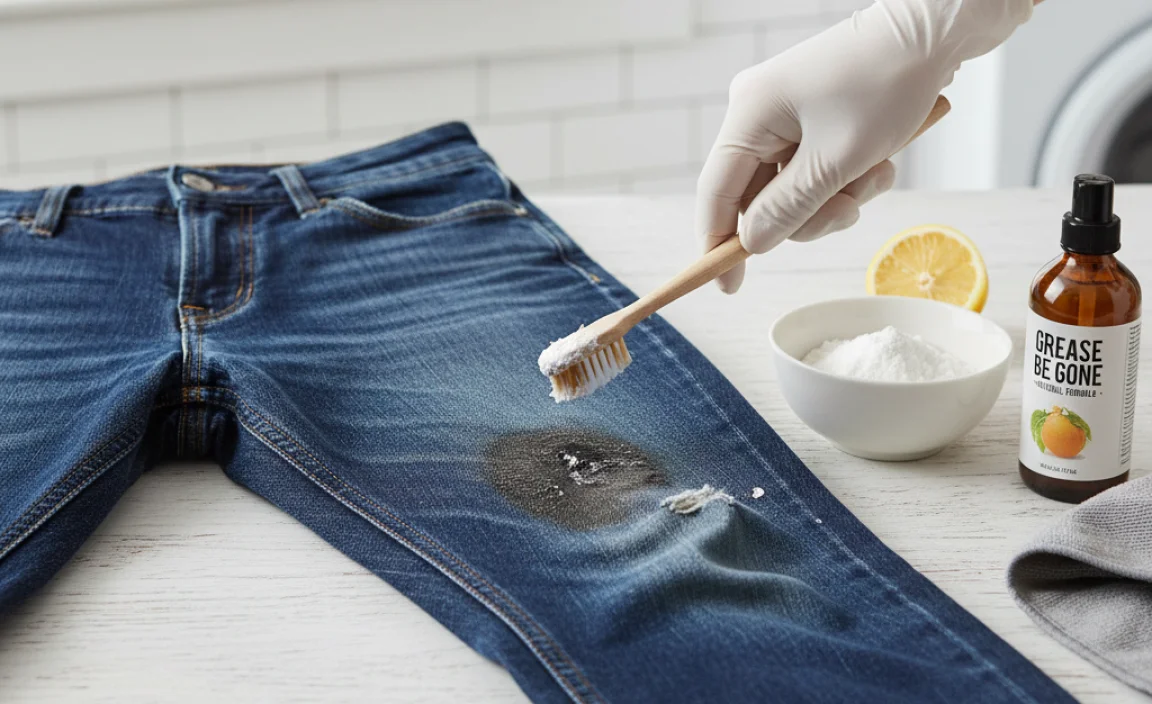
If the dish soap method doesn’t completely remove the grease, or if you’re dealing with an older, set-in stain, you can try a few additional options.
Option 1: Baking Soda or Cornstarch Paste
These absorbent powders can draw out oil from fabric.
What You’ll Need: Baking soda or cornstarch, water, dish soap, soft brush.
Steps:
1. Blot excess grease.
2. Mix baking soda or cornstarch with a little water to form a thick paste.
3. Apply the paste generously over the grease stain.
4. Let it dry completely. You’ll see it absorb the oil.
5. Brush off the dried paste.
6. Apply a small amount of liquid dish soap directly to the remaining stain and gently scrub with a soft brush.
7. Let it sit for 10-15 minutes.
8. Rinse with cold water and wash as usual. Air dry.
Option 2: Rubbing Alcohol
Rubbing alcohol can be effective at breaking down oily residues.
What You’ll Need: Rubbing alcohol (isopropyl alcohol), clean cloths or cotton balls.
Steps:
1. Place a clean cloth or paper towel underneath the stained area to catch any excess alcohol or loosened grease.
2. Dampen a separate clean cloth or cotton ball with rubbing alcohol.
3. Gently blot the grease stain, working from the outside in to prevent spreading.
4. As the cloth picks up grease, switch to a clean section or a new cloth.
5. Once you’ve lifted as much as possible, rinse the area with cold water.
6. Apply dish soap, let it sit, rinse, and wash as usual. Air dry.
Option 3: Commercial Grease Removers
If household remedies aren’t enough, specially formulated stain removers can be very effective.
What You’ll Need: Commercial laundry stain remover effective for grease, soft brush.
Steps:
1. Follow the product’s instructions precisely. Most involve applying the remover directly to the stain, letting it penetrate for a specified time, and then washing.
2. Always test the stain remover on an inconspicuous area of the jeans first to ensure it doesn’t cause discoloration.
3. Wash and air dry as usual.
Protecting Your Jeans During the Process

When treating grease stains, it’s essential to be gentle with your denim to avoid damaging the fibers or altering the wash.
Things to Avoid:
Scrubbing Harshly: Vigorous scrubbing can weaken fabric fibers and even create a faded spot that looks worse than the original stain.
Using Hot Water Initially: Hot water can set grease stains, making them permanent. Always start with cold water for treatment.
Machine Drying Before Stain is Gone: Heat is the enemy of set-in stains. Always air dry until you’re sure the stain has vanished.
Bleach (Unless Your Jeans Are White): Bleach can remove color from denim, often leaving a distinct white mark. It’s generally not recommended for grease stain removal on colored jeans.
When to Seek Professional Help
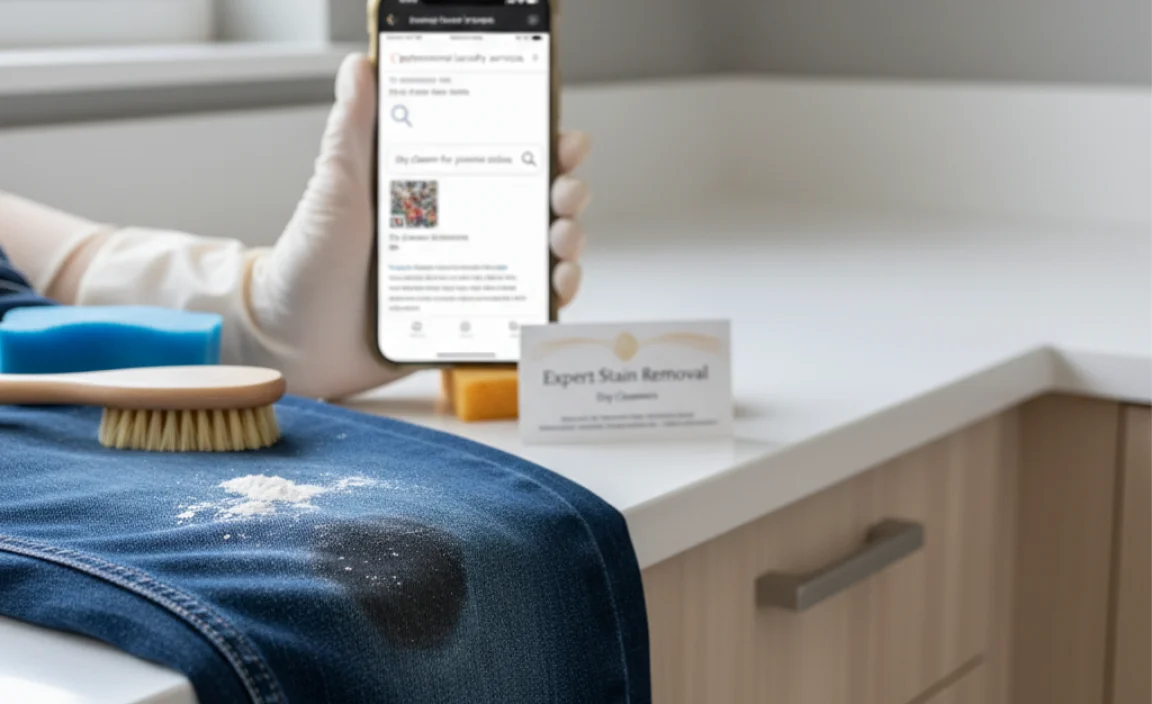
For very large, old, or complex grease stains, or if your jeans are made of delicate or expensive material, you might consider taking them to a professional dry cleaner. They have access to specialized solvents and techniques that can tackle stubborn stains without harming the fabric.
Preventative Measures Against Grease Stains
While accidents happen, a few simple habits can help minimize grease stains on your jeans:
Aprons: Wear an apron while cooking or working on projects that might involve grease or oil.
Be Mindful: Be conscious of where you sit or lean, especially if you’ve recently handled oily food or products.
Pre-treat High-Risk Areas: If you’re prone to grease stains in specific spots (like near pockets or knees), consider pre-treating those areas with a fabric protector spray designed for stain resistance.
Comparative Table of Grease Removal Methods
| Method | Best For | Pros | Cons |
| :——————– | :————————————— | :——————————————————— | :—————————————————————- |
| Dish Soap | Fresh to moderately set stains | Readily available, inexpensive, effective, gentle | May require multiple applications for old stains |
| Baking Soda/Cornstarch | Fresh to moderately set stains, absorbs oil | Natural, good for absorption | Can be messy, may require additional steps |
| Rubbing Alcohol | Slightly older or more persistent stains | Can break down grease effectively, evaporates quickly | Can potentially lighten darker denim if not used carefully, needs rinsing |
| Commercial Stain Remover | Stubborn and historical stains | Specifically formulated for tough stains, often very effective | Requires purchase, always test first for colorfastness |
Understanding Fabric Care Labels
Always check the care label on your jeans before attempting any cleaning method. This label provides vital information about water temperature, washing instructions, and whether certain products should be avoided. For example, some denim might recommend dry cleaning only, or have specific instructions for stain removal. Following these guidelines ensures you care for your garment properly. You can find detailed information on garment care symbols on the Federal Trade Commission’s website, which provides official guidance on textile labeling.
Frequently Asked Questions About Removing Grease from Jeans
What is the quickest way to remove a fresh grease stain from jeans?
For a fresh grease stain, the quickest method is to blot away excess grease with a paper towel, then apply liquid dish soap directly to the stain. Gently work it in, let it sit for 5-10 minutes, then rinse with cold water and wash as usual in cold water. Air dry until you confirm the stain is gone.
Can I use shaving cream to remove grease from jeans?
Some people report success using shaving cream on grease stains. The idea is that the foam can help lift the grease. Apply shaving cream to the stain, let it sit for a few minutes, then blot and rinse. However, dish soap is generally considered more consistently effective.
Will salt help remove grease from my jeans?
Salt is primarily used for blotting fresh liquid spills. For grease, it can absorb some of the surface oil if applied immediately after the stain occurs. Sprinkle salt generously over the fresh stain, let it absorb for 15-30 minutes, then brush it off. Follow up with dish soap treatment.
Can I use WD-40 to remove grease stains?
WD-40 is an oil-based lubricant and can actually worsen grease stains or leave its own oil mark if not rinsed out thoroughly. While some DIY methods suggest it for tough stains, it’s generally not recommended for fabric unless as a last resort and followed by rigorous cleaning with a strong degreaser like dish soap.
How do I treat grease stains on dry-clean-only jeans?
For dry-clean-only jeans, it’s best to take them to a professional cleaner experienced with stain removal. Point out the grease stain to them. Attempting to treat it at home with water-based methods could damage the fabric.
How to Properly Wash and Care for Denim After Stain Treatment
After successfully removing a grease stain, it’s important to wash your jeans correctly to maintain their color and integrity.
Wash in Cold Water: Always opt for cold water cycles for washing jeans, especially after stain treatment. This helps prevent color fading and shrinkage.
Use Mild Detergent: Choose a detergent that is color-safe and designed for delicate fabrics if your jeans are particularly new or dark.
Wash Inside Out: Turning your jeans inside out can protect the outer surface from abrasion during the wash cycle, helping to preserve their color and texture.
Avoid Overloading the Washing Machine: Give your jeans enough space to move freely in the machine. Overcrowding can lead to ineffective cleaning and increased wear.
* Air Dry is Best: As mentioned, avoid the dryer. Hang your jeans to air dry, preferably out of direct sunlight which can cause fading. If you must use a dryer, use the lowest heat setting and remove them while slightly damp to finish air drying.
Conclusion
Dealing with grease stains on your favorite jeans doesn’t have to be a defeat. By understanding how grease binds to fabric and using the right tools – often as simple as dish soap and some patience – you can effectively lift these stubborn marks. Remember to act quickly, treat the stain gently, and always air dry until you’re sure the stain is gone. With these tested methods and a bit of care, your denim can return to its best, stain-free appearance, ready for whatever adventures come next.


